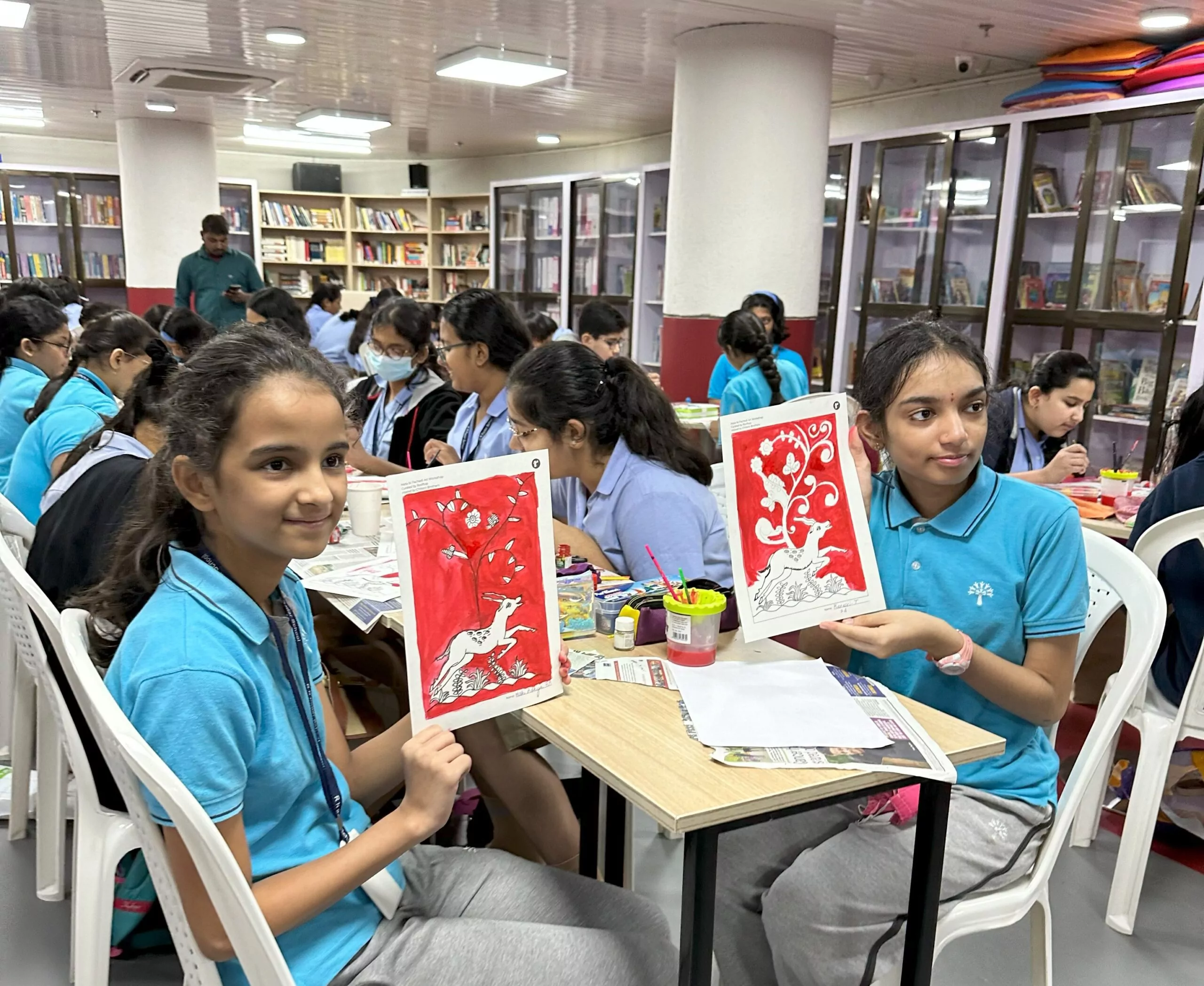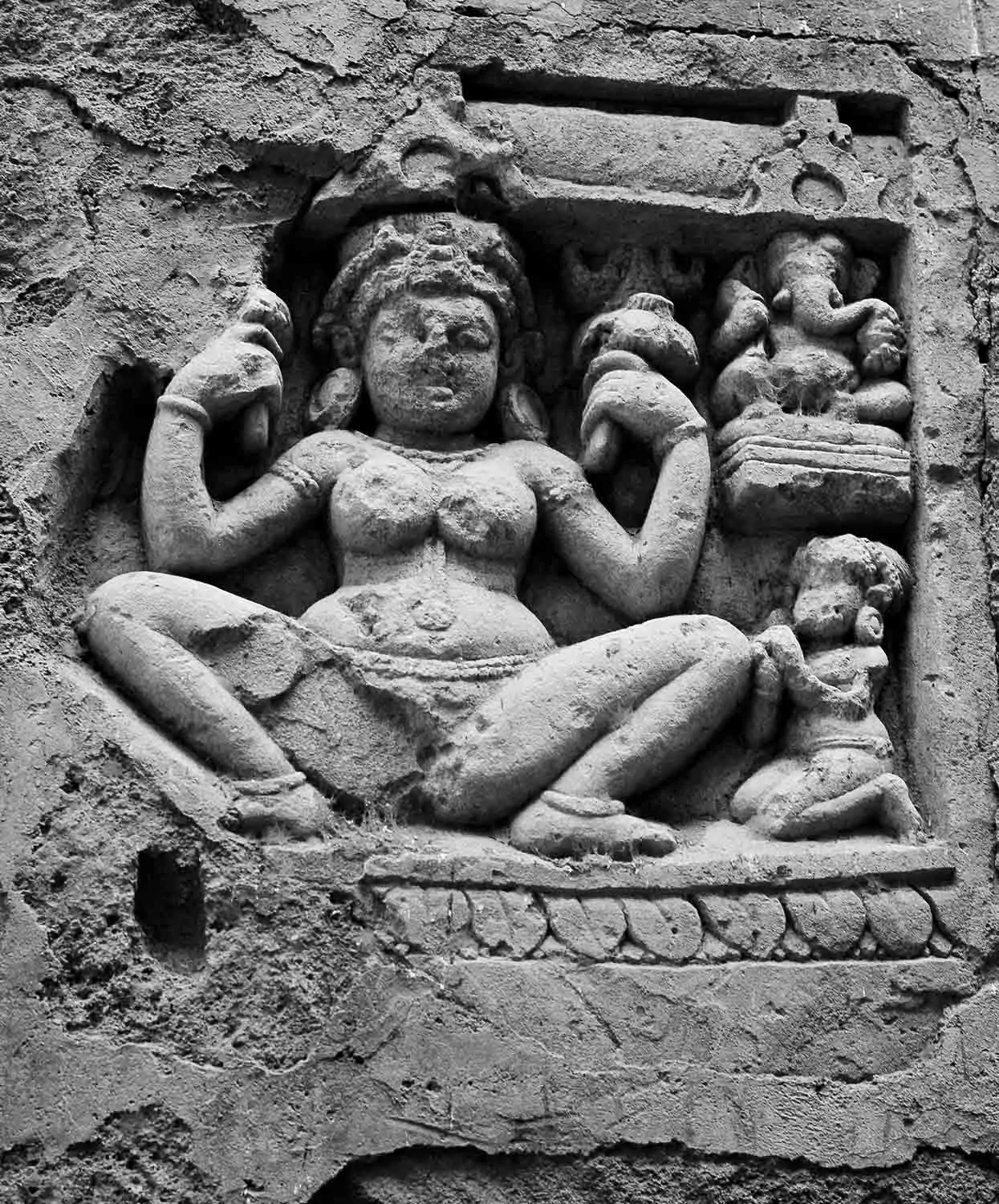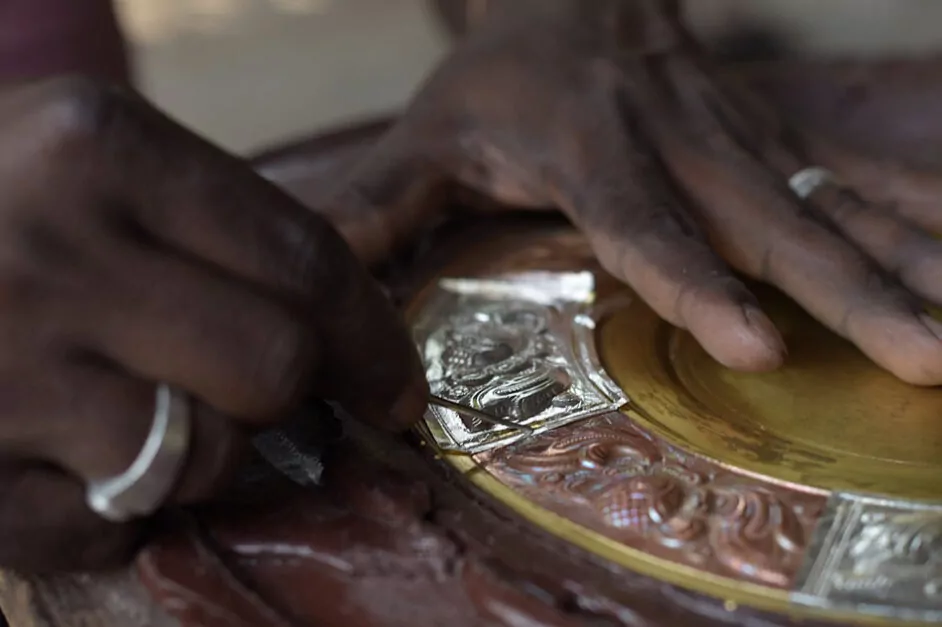Presented by Bal Bharti Public School, Pitampura, Delhi as a part of Phad se Padh initiative
Teacher’s Experience
Paintings are a big part of India’s rich and vibrant cultural history. One such painting style is Phad, a centuries-old indigenous art form from Rajasthan. These depict stories of the regional deities. Traditionally having been painted on long rolls of fabric, these are used for musical storytelling.
We recently got a chance to create our own Phad. It was an enjoyable experience! At first, we sketched a plan for the theme, Gandhi and the Civil Disobedience and Non-Cooperation Movement, using traditional patterns and motifs. Then using paints, we put them on a canvas. It was a delightful and rewarding experience because we could create something unique with a meaningful story behind it.
Student’s Experience
All art should inspire and evoke emotion – keeping this maxim in mind, we participated in Project Phad se Padh. Phads are seen as mobile temples which show stories of deities. These paintings are carried around by Bhopas and Bhopis, the priest-singers who perform these stories.
We got to highlight the Civil Disobedience Movement and the Dandi March through this art form. During British rule, Indians had to pay heavy taxes on salt. In protest, Mahatma Gandhi launched the Civil Disobedience Movement in March, 1930 from the Sabarmati Ashram, walked to Dandi, and picked up salt on the beach, shaking the British Empire.
This art form chronicles the episodes of folk heroes. Through Phad se Padh, we recorded heroes from our freedom movement. We connected with our history and learned about Indian traditions too.



